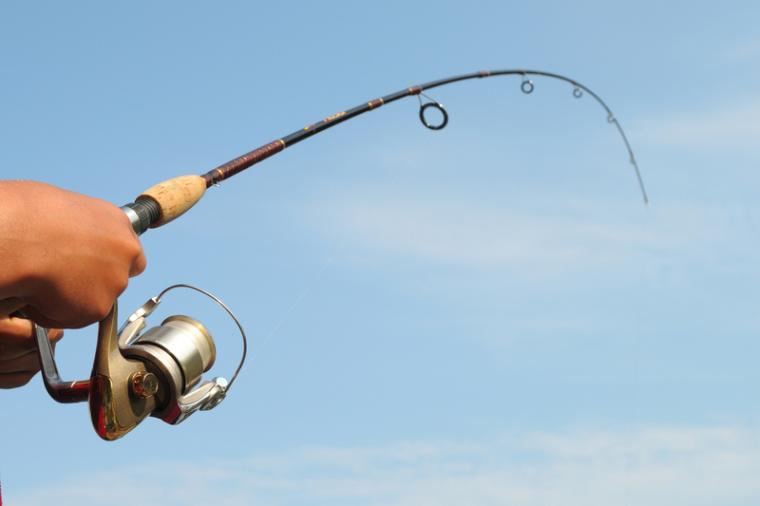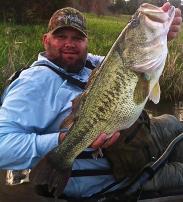

While the pandemic did nobody any favors, it moved a lot of people out of the confines of their homes and offices, and into the outdoors. At Kayak Bass FishingTM (KBF), we saw a corresponding increase in membership, as well as an increase in participation.
For context, here are some numbers:
• In 2019, 14 people participated in five or more of our events
• In 2020, that number jumped to 87
• In 2021, it rose again, to 164
• We also had a 37 percent increase in membership
• Traffic to our website went through the roof; obviously, we caught the attention of plenty of people.
Those are all pretty big bumps but whether this growth is sustainable is still unknown; we’ll have to see what happens in the future. However, something we do know is that the pandemic opened the door for a lot of people to have time off – and eventually, to work remotely. Now that things are normalizing, many employers, as a result of seeing that people could work successfully from home, are not going back to their brick-and-mortar offices – and many employees are moving to performance-based contracts (PBC), allowing them more flexibility in how they spend their days. That’s an interesting shift and we’ll see how it will play out over the next few years.
I think it’s as a result of people being able to get outside more that kayaking is growing – and likely the entire paddle sports industry overall. A lot of anglers are learning about the joy of paddle sports, such as rafting, kayaking and canoeing. Something we at KBF would like to do is establish a paddle sports safety center, as well as safety curriculums that could be offered online or in person. That’s for down the road but it’s a reflection of the growth – and the need for programs that would be available at an affordable price to anyone who wanted to take advantage of them.
In the meantime, we are enjoying the growth of our discipline in the sport. And even with the pandemic, the reasons people are taking up kayaking (and other paddle sports) remain the same as before:
There are low barriers to entry. There is a lot of media coverage of fishing tournaments and therefore, a lot of people have become interested in learning to fish. The average fishing boat – in this case, we’ll say a bass boat – is a significant investment. You have to be committed to the sport to really want to put in the money, and if someone is just starting out, it’s unlikely they’re going to want to pay that much. But a kayak is relatively inexpensive – there are even inflatable models on the market – so there is not that much of an up-front cost. And unlike a boat, they’re easily stored and easily transported.
The perceived value is good as well. In the last two years, those who purchased kayaks have spent what we call more days afield than they did before, probably because they were home from work. In other words, the number of days they were out on the water increased, and that gave them a sense of an even greater value for the kayak they own.
They are easy to use. It’s easy to get the hang of paddling (or pedaling, if you’re in a fishing kayak). We always say that once they get the kayak, anglers are locked and loaded. They also do not have to worry about the continued maintenance or fuel costs that come with owning a motorized boat.
Users have more access to water. You can reach a lot of places much more easily than either someone fishing from the bank or even someone fishing from a motorized boat. You don’t necessarily need a boat ramp so you can go to smaller bodies of water that other anglers can’t.
There have been checks and balances to the growth of paddle sports, though; while there was a demand for more kayaks during 2020, for example, many manufacturers did not have the resources to fill all the orders they were getting. Often, they did not have the employees necessary, or else the supply chain was disrupted, and materials and equipment weren’t available. It will be interesting to see what happens in terms of sales of equipment as things get back to normal.
What we’ve changed. At KBF, we’ve revolutionized a few things since 2019. When everyone was running away from the fire in 2020, we were running toward it. I like to think of us as a disruptor in the tournament industry: the Uber of fishing.
We doubled our schedule last year. While we still require anglers to fish at least three of our KBF Trail Series events (one day each) to begin earning points for Angler of the Year, we have begun offering one-day events on both Saturday and Sunday in order to allow people to participate more and to qualify more quickly. Another benefit is that those people are staying in the tournament host town and that creates a nice economic benefit – something tourism officials like.
As a result of the growth we’ve seen over the past few years, we’re charging ahead into 2022 with a strong schedule that will take us to a lot of great destinations. Those tournaments are listed on our website and include (but are not limited to) the KBF Trail Series, KBF College Series, KBF High School Series, KBF Challenge Series, Dee Zee KBF The TEN, KBF Pro Series, KBF AmBASSador PRO Open, KBF Top Team Cup and the KFB National Championship. Additionally, KBF members have access to other events throughout the year.
What’s next on the horizon for us? We plan to launch a lifestyle brand: Fish Ops, and to use it to fund scholarships for the children of deceased members of our military, as well as to present programs to help prevent suicide among those who have served. And there’s a lot more than that in the works, so stay tuned.
Our industry is growing, and it will be interesting to see where things go from here. SDM

